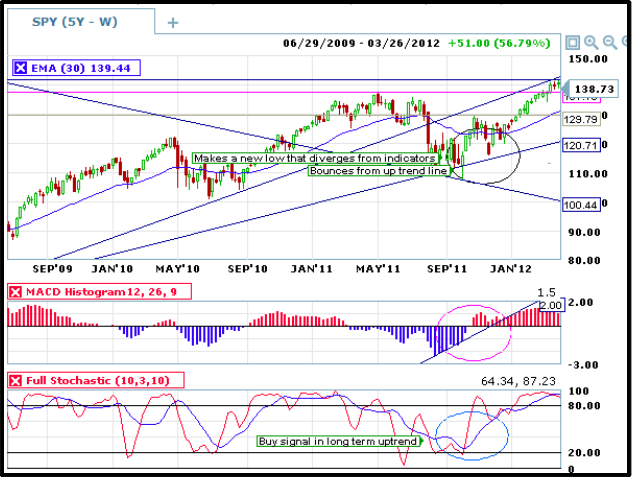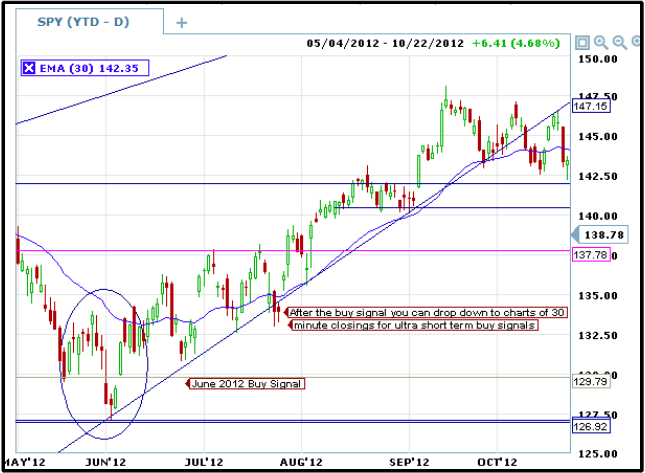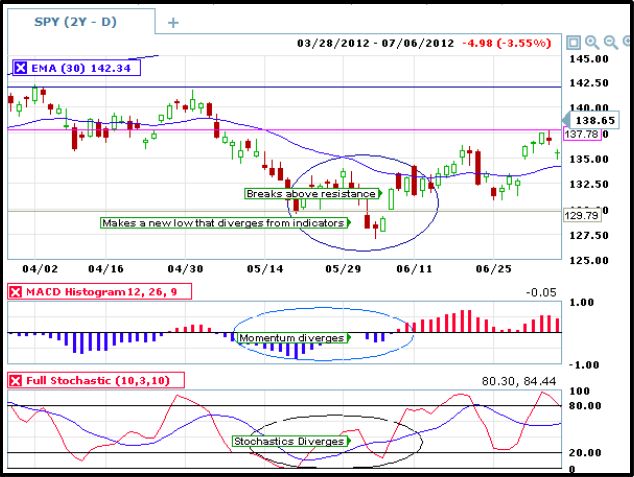Convergence Of Indicators in Binary Options
What Is A Convergence Of Indicators
Just about everywhere you look you can find someone talking about one stock trading strategy or another. There is always a reason why one is better than another, usually told in percentage gains, and there is always back tested data to support the methodology. What they don’t tell you is how many times the strategy fails, or that it only works in certain kinds of markets. Individual indicators are not good trading strategies when used alone.
The very best way to judge market direction is through a convergence of indicators. By using more than one indicator you can weed out whipsaws and other false signals. What exactly is a convergence? A convergence is when one or more things come together, forming one. Roads converge on the highways, thoughts converge in educational environments and technical indicators converge on stock charts. When technical indicators converge and give a unified signal it is showing you that individual market forces have come together, forming one.
How To Use A Convergence Of Indicators
It is possible to use a convergence of indicators in order to trade binary options. The first thing to understand is that longer term bullish or bearish signals may be indicated for a long time. What I mean is that when a long term bullish buy signal appears it may be valid for days or weeks, versus a short term buy signal which may only be valid for a few hours or minutes.
In order to use a convergences in binary options trading you must first understand the underlying trend. Bullish momentum may increase over several weeks or months and the reverse is true in bear markets (but bear markets are usually much sharper and decline quicker than bull markets advance). Use longer term charts like a 5 year chart of weekly closing prices to analyze long term markets and trends. You can use trend lines, moving averages, momentum indicators like MACD and other tools of technical analysis to identify trend and potential support/resistance levels. When you have a good understanding of the underlying trend it is time to move to a short time frame.
 Identify a buy signal in a long term uptrend with a convergence of indicators.
Identify a buy signal in a long term uptrend with a convergence of indicators.
The next step is to move down to charts of daily closing prices. This chart is useful for binary traders and can give buy and sell signals but these are going to be for monthly or weekly expirations, depending on trend and the proximity of support/resistance. You can use the same indicators as before. Identify the mid term trend and then either 1) wait for a new buy/sell signal to develop that converges with the longer term trend or 2) identify a current long term signal and move down to an even shorter time frame to look for convergences. Buy or sell signals in the mid term should converge, or echo, the long term; if there is a bull trend in the long term wait for a bull trend in the mid term.
Once a long term buy signal is identified move to a shorter term chart and wait for a signal here.
The next step down for me is a 30 day chart of 30 minute closing prices. This is not a standard time frame, I do not think there is one that can be called standard, it is just the time frame and market view that works for me. As before, you can use the same indicators here to determine the short, and ultra-short, term trends in the market. At this level it is not as important to trade with the underlying long and mid term trends as it is in the longer time frames like daily or weekly closings. However, I can say that I have been more successful when I trade with all three trends in convergence.
 When you have identified a buy signal on daily charts you can move to an even shorter time frame in order to identify ultra short term signals.
When you have identified a buy signal on daily charts you can move to an even shorter time frame in order to identify ultra short term signals.
Why A Convergence Doesn’t Suck
Convergences of technical indicators don’t suck because because they are a more reliable indication of market direction. A convergence shows that traders from multiple disciplines, following multiple strategies all have the same or similar idea. If there are 1 million traders following the 30 day EMA and 1 million traders following the 150 day EMA and 1 million traders following stochastics and so on and so on each time another indicator converges and gives a signal at the same time the more volume and support price will have. This theory is true in bull and bear markets, a convergence of bearish technicals bears more weight (no pun intended) than one bearish indicator alone.
Why Convergences Suck
The biggest reason why convergences suck is the time involved. It may take months, sometimes years, for signals to converge. This is a lot of time without signals, without trading and without profits. In fact, some indicators are not at all suited for short term trading like binary options. Waiting for short term and ultra-short term moving averages to converge with longer term ones could literally take forever. In order to overcome this and successfully utilize convergences of indicator you will have to focus on shorter term indicators.
The Final Word On Convergences Of Indications
Convergences of indicators have some good and bad points. They are good because they support price movement in a way that single indicators do not. They add, or should add, volume to markets and can enhance price movements. On the other hand, convergences can be hard to come by, especially in the current environment. In the long run I think that convergences are good and that they don’t suck. It’s not always bad to wait for a trade and it is possible to use convergence theory in short term trading. I use, and will continue to use convergences in my binary options trading.
Continue Discussing the Convergences of Indicators with thatsucks.com community
